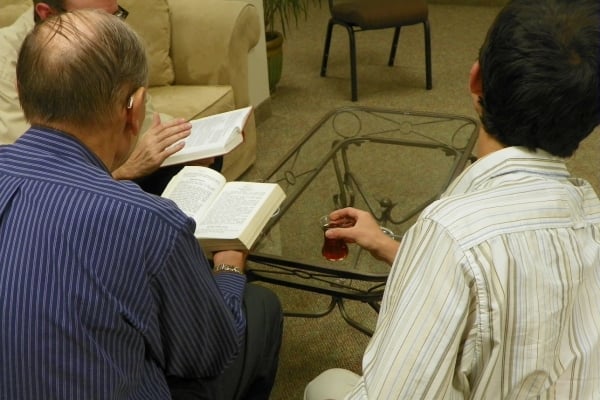
Four Myths That Prevent Christians From Seeking to Reach the Deaf
The vast majority of the Deaf don’t have access to the gospel—the best estimate is that, at most, two percent have been introduced to Christ!* Unless Christians intentionally take the good news to Deaf Communities, the remaining 98 percent will remain without the hope found only in Jesus. But numerous myths prevent believers from seeking to reach the Deaf.
Myth #1: The Deaf can just read the gospel.
Although some Deaf people are able to read, many struggle to fully understand written materials. All written Scriptures currently available are based on spoken languages, which the Deaf have never heard. Depending on an individual’s level of education and aptitude, it could be inherently more difficult for them to read as they’ve never heard the sounds that letters symbolize and instead must memorize which combinations of letters form which words.
In addition, sign languages, similar to all spoken languages, have unique structures and idioms—they’re not word-for-word translations of spoken languages. So, for the Deaf, reading the Bible means reading it in a second language, even if they’re reading it in the language that’s spoken where they live. They can’t read it in the language of their heart.
Myth #2: The Bible is readily available in sign language.
Only American Sign Language (ASL) has a complete Bible. Most sign languages don’t have even small portions of Scripture. And even the Deaf who use languages that do have a partial translation of the Bible may not know it exists or where to access it. Unless believers communicate the gospel to the Deaf through the means of communication that’s most accessible to them, they can’t learn of the hope of Christ.
Myth #3: All Deaf people use the same sign language.
It is estimated that over 400 sign languages are used by the Deaf worldwide. Each has its own unique structure and idioms. To reach all of the Deaf worldwide, the gospel needs to be communicated in every one of these languages, through believers who enter Deaf communities and through the Bible translated into each of these languages.
Myth #4: Ministries to the Hearing reach the Deaf with the gospel as well.
Even if a Deaf person lives in a community with many churches, a significant number of Christians and access to printed Scripture, he or she is unlikely to be reached with the gospel. Although the Deaf may look like the Hearing people in the surrounding community, they are more likely to identify with their Deafness and Deaf community than with the wider culture. Just as followers of Christ must serve across cultures to bring the gospel to least-reached Muslim, Hindu and Buddhist communities—we don’t expect members of those communities to cross cultures in search of the good news—believers also need to enter Deaf communities and share the gospel in relevant ways.
Participate by Praying
- Ask God to raise up workers—Deaf, Hard-of-Hearing and Hearing—with a passion to reach the Deaf and the ability to enter least-reached communities.
- Pray that believers in Deaf churches will have a burden for Deaf communities around the world.
- Ask God to enable Christar to effectively collaborate with other organizations that work with the Deaf.
- Pray for open doors for ministry in Deaf communities.
- Pray for wisdom as Christar seeks to effectively bring the gospel to not-yet-reached Deaf communities.
- Ask God to provide the funds needed to launch this critical new outreach.
*Statistics from Deaf Bible Society



























_1639424523_600x400.jpg)













